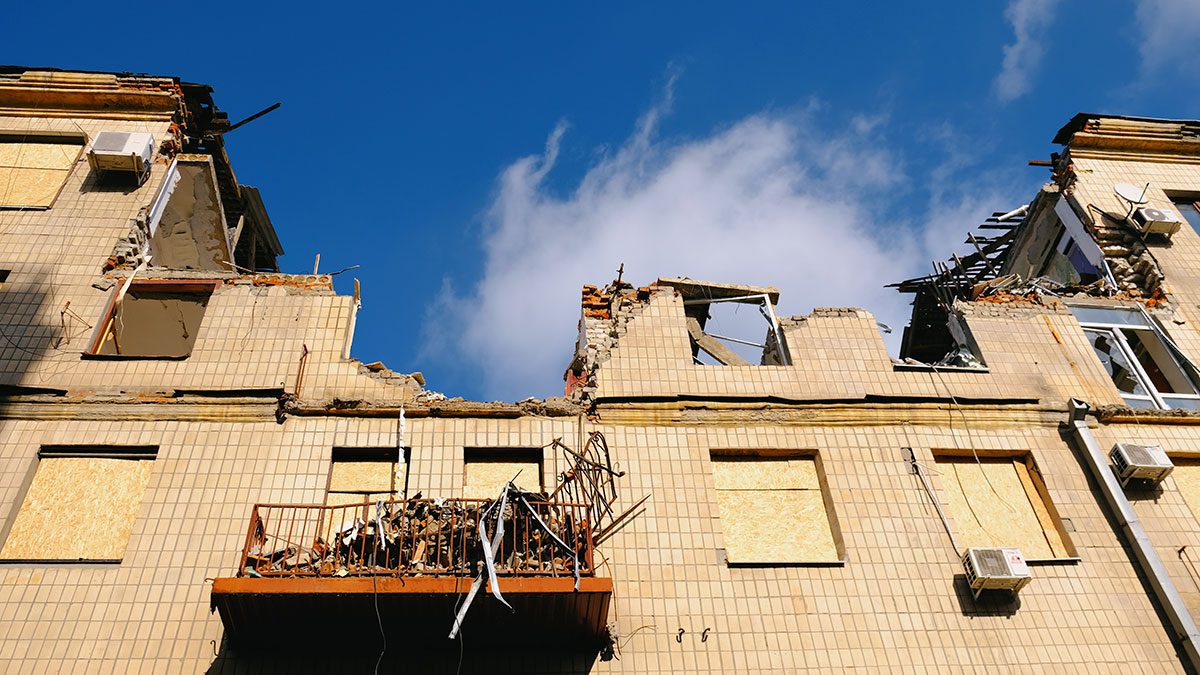Russia Is Winning
Over the last three months, since the appointment of General Sergei Surovikin as commander of the Russian forces on October 9, the war in Ukraine has turned decisively in Russia’s favor.
Initially, it appears, Putin failed to anticipate the strength of Ukrainian resistance and embarked on his “special military operation” without bringing Russia’s full military potential to bear. Under these circumstances results were mixed. This never meant that Russia was at all likely to lose if it did use its potential. In real life it is almost always Goliath who wins, not David. Now Russia has mobilized for war, though still only partly.
Why almost always? It was conceivable that under the pressure of an unpopular war the Putin regime might collapse from within. The new leadership would then have to withdraw from Ukraine. Western hawks still count on this outcome, but it looks extremely unlikely. Only a small minority of Russian citizens have been prepared to risk a long prison term by openly defying the authorities (about 15,000 people have been arrested for anti-war protest). Again, there is no shortage of men willing to sign contracts to fight in Ukraine; on the contrary, applicants have to be turned away.
(On a personal note. I belong to a Russian-language international discussion group set up by a left-wing Russian professor. He had always been passionately anti-war, but he reacted in his log to the start of the “special military operation” with vague waffle. A member of the group in Moldova called upon him to be more forthright and condemn Russian aggression. He honestly replied: “If I made a statement of the kind you want me to make, I’d end up in prison.”)
Surovikin has transformed a war of maneuver over territory into a war of attrition, in which territory is of no immediate importance. The goal of such warfare is to achieve overwhelming superiority by destroying enemy forces. He has withdrawn even from areas of central Ukraine that had already been formally incorporated into Russia. Fighting is now concentrated in the western half of Donetsk Province, the only part of Donbass not yet under Russian occupation. The fighting there is ferocious. The Ukrainian command has now lost most of its trained fighters and has resorted to feeding the voracious “meat grinder” with the bodies of boys down to the age of 13. (For more on the calamitous condition of Ukrainian military forces, watch YouTube interviews with Scott Ritter and with retired colonel Douglas Macgregor.)
Once attrition has completed its work, of course, Russia will be able to occupy whichever parts of Ukraine it wants.
Fighting Russia to the Last Ukrainian
The only rational course now open to Ukraine is to sue for peace and hope to salvage whatever can still be salvaged. And the sooner the better: the longer the inevitable denouement is delayed, the more draconian the terms that Russia will be able to impose.
In fact, secret Russian-Ukrainian talks back in March produced a draft agreement in which Ukraine accepted neutral status. The agreement just needed to be signed. Then British prime minister Boris Johnson flew in to Kiev and persuaded Zelensky to fight on.
Negotiations between Russia and Ukraine and between Russia and the US are needed, above all, in order to reduce the risks of escalation already present in the confrontation. Some Western politicians prefer this course. Those who seek to prolong the war aim thereby to weaken the Putin regime and Russia as a great power, even at the price of the complete destruction of Ukraine – to “fight Russia to the last Ukrainian.” Is this not what Biden had in mind when during Zelensky’s recent visit to Washington, DC he promised that the US would ‘stand with Ukraine for so long as there is a Ukraine’?
Boots on the Ground
At the same time, the Biden Administration is trying to put together another “coalition of the willing” consisting of some but not all NATO members to intervene in Ukraine with “boots on the ground.” The likely participants in such a coalition, besides the United States, are Britain, Poland, and possibly Romania. (See: Col. (ret.) Douglas Macgregor, “Will Biden Gamble on a Ukraine Coalition?” The American Conservative, 11/3/2022.)
Such an intervention, should it take place, will itself be a major escalation of the conflict. An indirect or proxy war between nuclear powers – the US, Britain, Russia – will have turned into a direct war, entailing imminent risks of escalation to the nuclear level.
Once a US-led intervention is underway – or even as soon as Russian military intelligence detects a decision to intervene – Russia is likely to respond with a southward thrust from its troop concentration in southwestern Belarus, passing to the west of Kiev. At best this may deter implementation of the planned action. Otherwise it will at least block eastward penetration of NATO troops and deploy Russian forces in a good position to attack them at the earliest possible moment. The earlier the attack the more effective it will be, because NATO troops will be at their most vulnerable immediately after they enter Ukraine, before they have had time to reach their designated places of initial deployment, dig themselves in, and establish coordination among their national components and with any surviving Ukrainian forces.
Paths to Armageddon
Escalation to the nuclear level may occur either in a stepwise fashion or all at once. Stepwise escalation is most likely If intervening forces are equipped with tactical nuclear weapons. A powerful and ‘premature’ Russian attack against inadequately prepared NATO troops may well sow panic and confusion and trigger battlefield use of tactical nuclear weapons on the principle of “use ‘em or lose ‘em.” In general, the greatest danger of stepwise escalation arises when one party to a conflict suffers a devastating defeat at some level and finds that defeat intolerably humiliating.
Even a direct conventional war will lead to nuclear forces being maintained at very high levels of readiness. Under these circumstances there is a heightened risk that nuclear missiles will be launched on the basis of misperception. In particular, Russian intelligence officers and decision makers may arrive at the false conviction that the United States is about to launch a first strike and “pre-empt” (“get in first”). The Andropov leadership arrived at just such a false conviction as a result of NATO’s Able Archer exercise in 1983 (see: Nate Jones, Able Archer 83: The Secret History of the NATO Exercise That Almost Triggered Nuclear War, New York: The New Press, 2016).
Reflections: Now and Then
The international situation is more perilous today than it was even at the worst moments of the old Cold War. As someone who came to maturity at that period, I am shocked and astonished that a government of the United States should be giving serious consideration to plans to go to war with Russia, now as then one of the two main nuclear powers. In those days too, Russia’s power elite – Russia then went by the name of the Soviet Union – was prepared to invade East European neighbors that dared assert their independence. In 1956 Hungary was invaded; in 1968 it was the turn of Czechoslovakia. Westerners sympathized with the Hungarians and with the Czechs and Slovaks. There was, however, no question of NATO intervention. That option — going to war with Russia over Hungary or Czechoslovakia — was ruled out from the start. A person who took the contrary view would have been regarded as insane.
It was widely recognized that with the appearance of nuclear weapons humanity had entered a new age. In this new “nuclear age” it was necessary to tolerate and coexist with diverse regimes, however strange or morally repugnant we might find them. This was simply because nuclear war had to be avoided. That was always Priority No. 1. Awareness of this imperative was heightened by the mass movements against nuclear testing and for nuclear disarmament.
The Ukrainian crisis reveals that somehow this awareness has largely dissipated. Arguing on Facebook in favor of a compromise peace, I have been unnerved to read responses like: “Nuclear war is better than submitting to injustice.” I respond to this by asking: “Do you really expect a just society to arise after a nuclear war?” – but get no answer.
By comparison with the current crop of political leaders, the strategists of the Cold War look like paragons of good sense. Henry Kissinger, still alive at 102, is not highly thought of by peace activists, who remember his support for the American war in Vietnam. Nevertheless, in a recent interview he stressed the urgent need for a peace agreement with Russia – a position that some have treated as evidence of senility.
I honestly believe that if NATO forces are sent into Ukraine the result is more likely than not to be nuclear war. There has never been a time when it was more important for ordinary people to raise their voices and demand peace. Saturday’s peace demonstration in Rome shows the way (over 100,000 participants).



